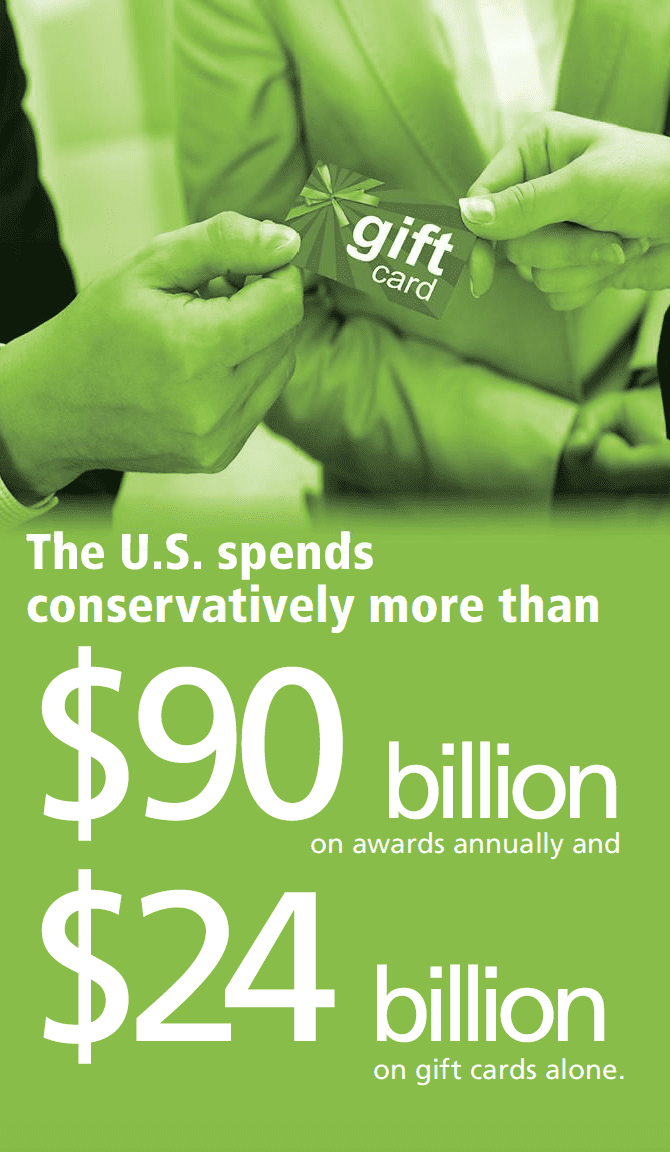Company culture, increased investment, and technology are playing a big role in today’s rewards programs.
By Melissa VanDyke
Human capital investments as a trusted way for organizations to sustain and grow success continue to build. Aside from the more than 80 percent of U.S. businesses that now invest in alternative awards for their sales population or employees, a recent study by the Incentive Research Foundation (IRF) found that top-performing businesses view rewards and recognition as an important part of the human capital playbook. Of the 900 organizations reviewed, only 300 met the qualifications to be considered top performers: over five percent year-over-year revenue growth, 90 percent customer retention or satisfaction, and 90 percent employee satisfaction or retention.
These top-performing companies all had one thing in common -their belief in the value of non-cash rewards and recognition. They were 20 percent more likely than average businesses to strongly agree on the benefit of non-cash rewards across 11 metrics, including the use of non-cash rewards as excellent engagement and retention tools. Top companies were also 30 percent more likely than average businesses to strongly agree that their non-cash reward and recognition programs were effective.
The IRF’s 2018 Trends study revealed five non-cash rewards and recognition trends that HR should consider to motivate their workforce:
1. Concentrate on culture. At a time when market positioning is less about the stories and images organizations publish externally and more about the culture that clients and customers experience, organizations must lead based on values. A robust culture is also the foundation for accelerated innovation, adaptive performance, and employee committment. While recognition based on tactical performance was once the norm, organizations today are improving culture and fostering employee growth by rewarding their employees’ ability to make deliberate decisions and process improvements in real-time.
2. Budget for success. Across the board, the IRF continued to see increased financial investment in non-cash reward programs. Net optimism in the value of non-cash reward programs is up almost 20 points year-over-year. This optimism was reflected in a four percent increase in annual spend on incentive travel to $3,915 per person. A third of respondents also noted an increase in their merchandise and gift card budgets. Organizations spending between $1 and $250 annually per employee dropped to 43 percent, while organizations with budgets between $251 and $5,000 per person rose to 57 percent.

Organizations are doing their best to stay ahead of the game, with 90 percent taking a proactive approach to regulatory compliance in their non-cash rewards programs. Almost half of respondents said they had reworked the entire program to meet compliance demands, while over half of U.S. firms responded by changing the products included in their sales programs and increasing their accounting and program scrutiny.
4. Talent and tech. Considering the importance today’s organizations place on data, it is no surprise that in the next few years, predictive analytics and augmented reality will become fundamental to all forms of talent and performance management. The impact of these technologies will also be felt in incentive, rewards, and recognition programs. Organizations like Google and Unilever are currently at the forefront of harnessing employee engagement data, network data, external data from Glassdoor, employee text data, and even “ambient data,” and using this data to direct policies, procedures, and products that impact performance.
Over the next few years, talent professionals will increasingly seek to understand how artificial intelligence and predictive technology can be used to deliver a better employee experience. This will encompass reward and recognition experiences, and ambient and hard data will be leveraged to recommend rewards that are personally meaningful and create engaging experiences in face-to-face meetings. Behavioral data in reward systems may even be able to predict changes in levels of engagement and performance.
5. Meaningful rewards. In the end, truly impactful rewards and recognition programs create emotionally engaging experiences that employees will remember throughout their careers. Assuming that cash compensation and gift cards are sufficient in giving employees the meaning and drive they need to go above and beyond on a daily basis can actually be detrimental to business performance. Failing to explicitly tie recognition to stated organizational effort may also hinder performance.
The U.S. spends conservatively more than $90 billion on rewards annually and $24 billion on gift cards alone. But in today’s competitive landscape, organizations need to provide the structure and tools to make work meaningful. This begins with ensuring a personal thank you accompanies every reward and that each reward has a personal meaning or is selectable by the employee. Likewise, tying the reward to the organizational or departmental effort for which it was earned ensures it is perceived as more than a gift, but rather a meaningful reflection of a job well done.
Melissa Van Dyke is president of The Incentive Research Foundation.














